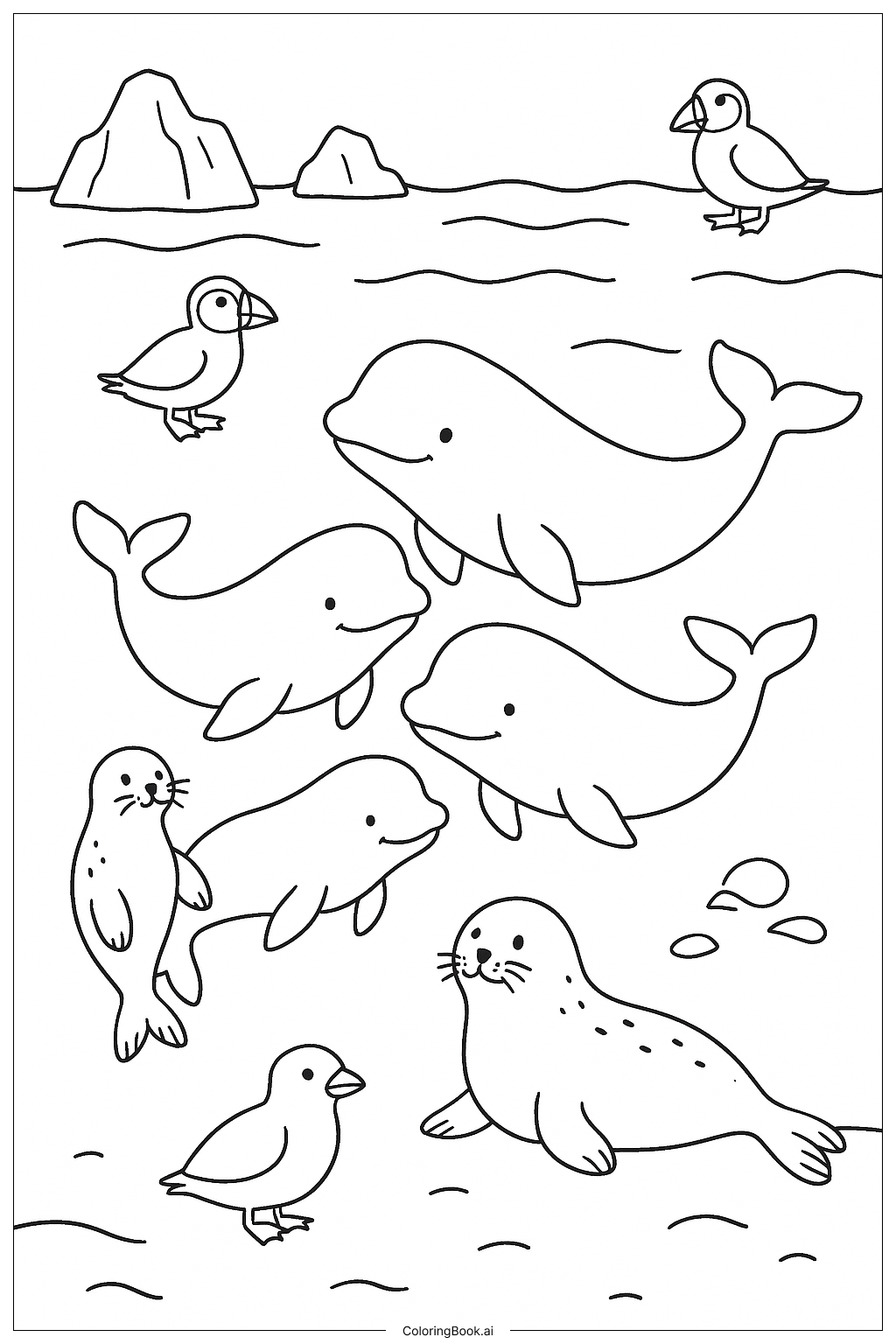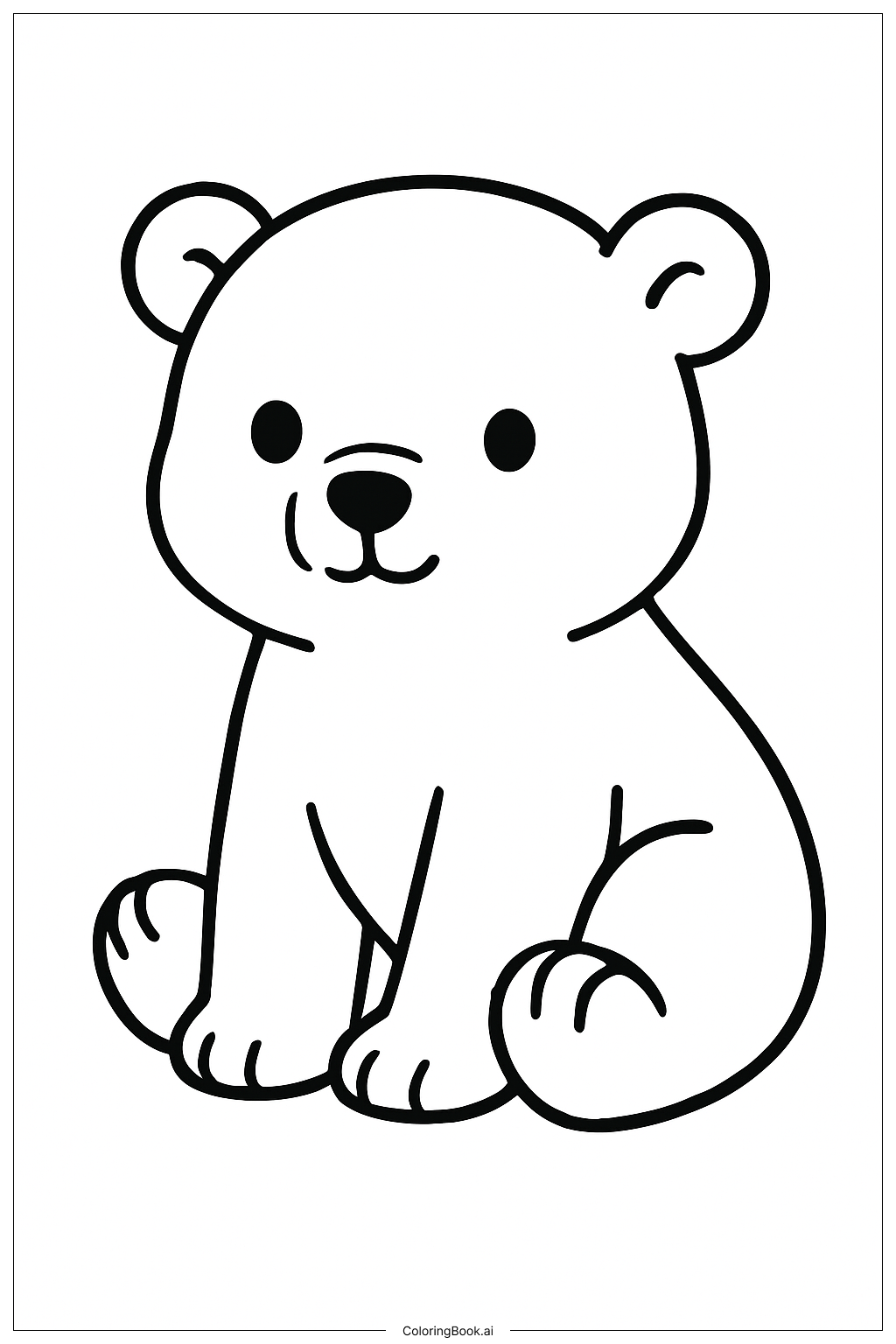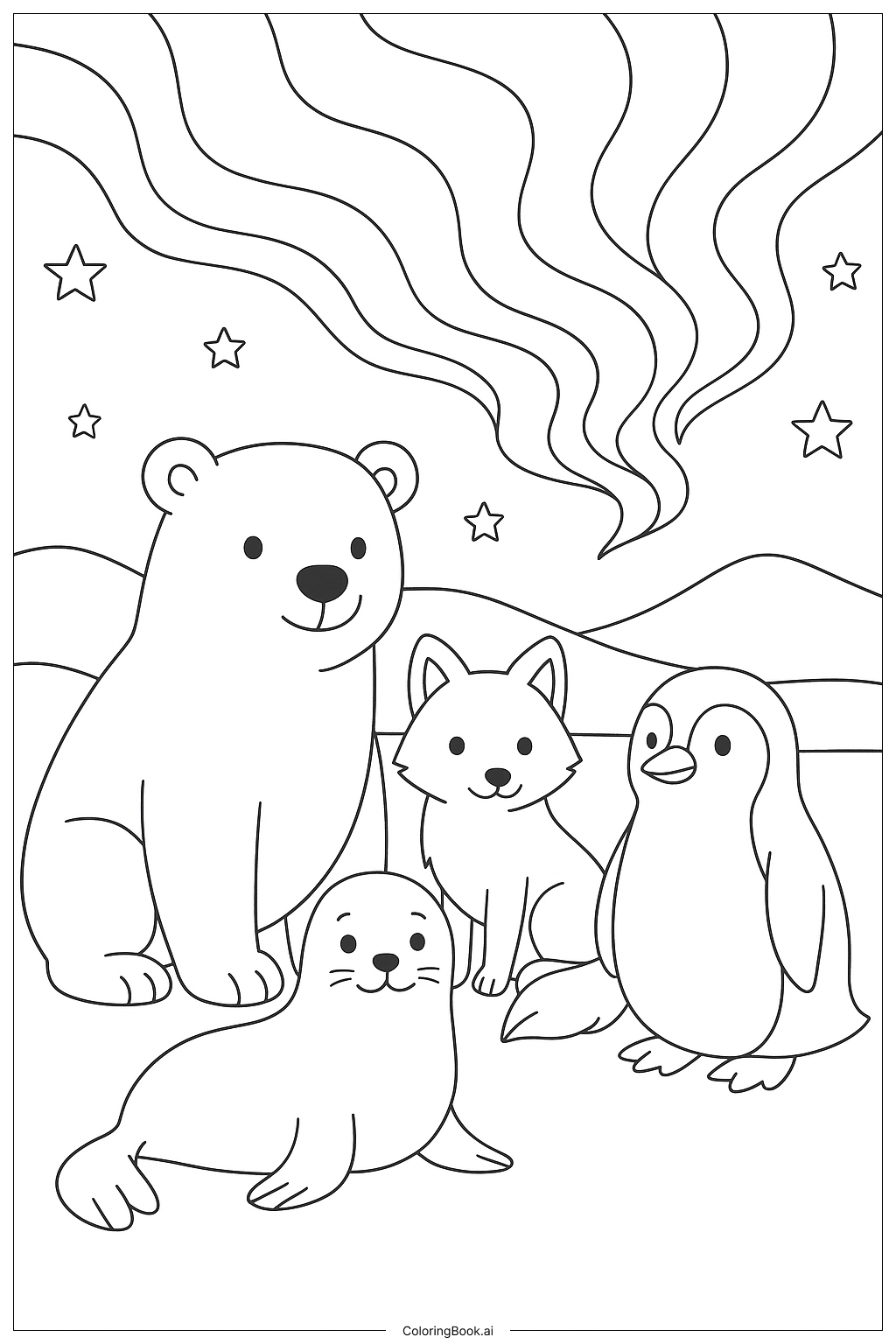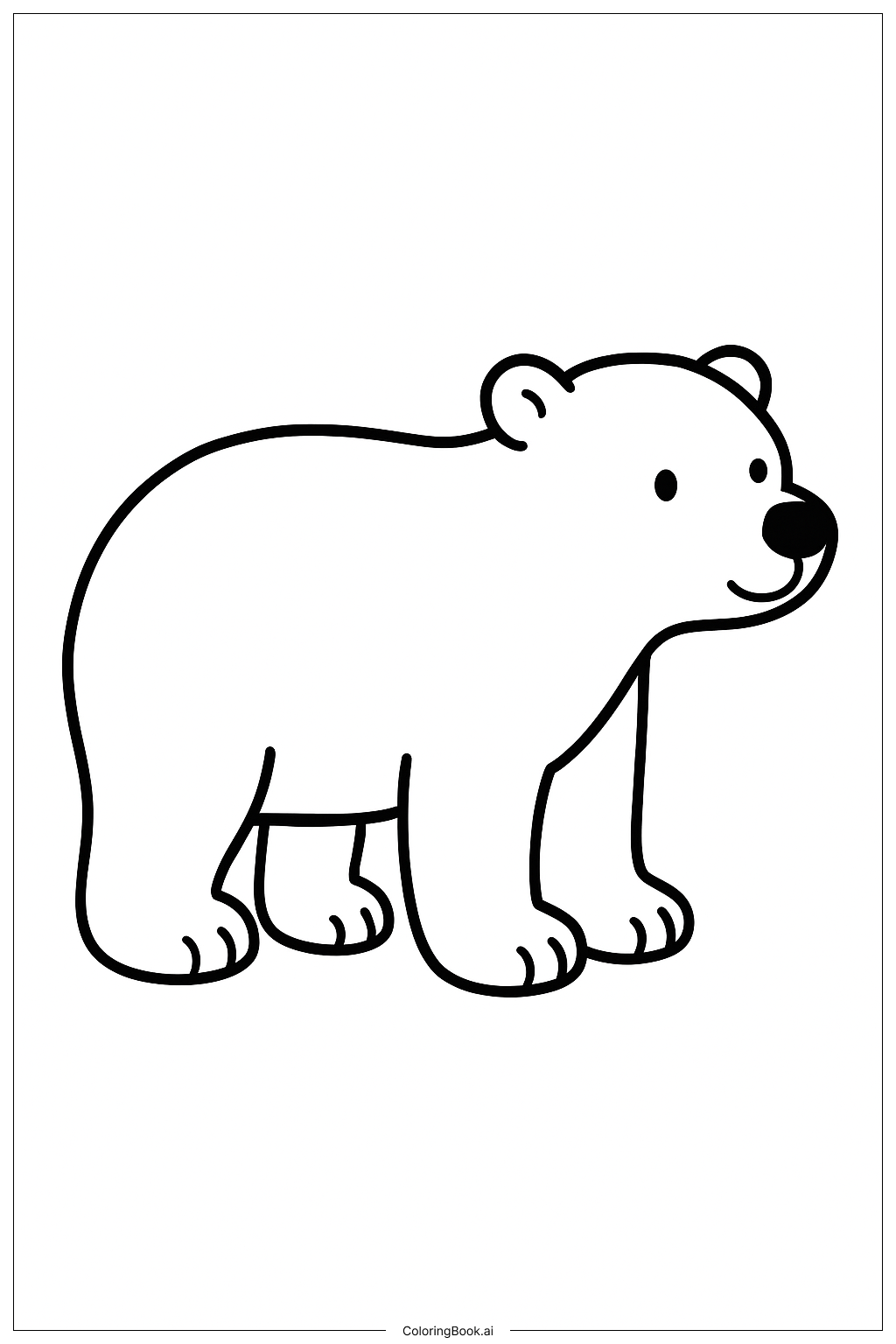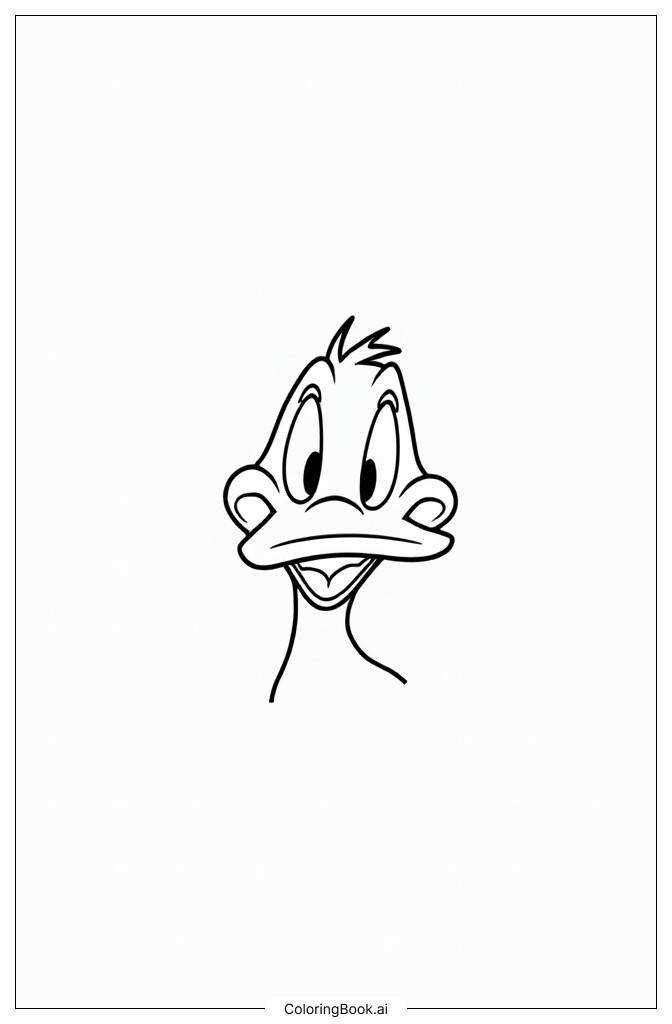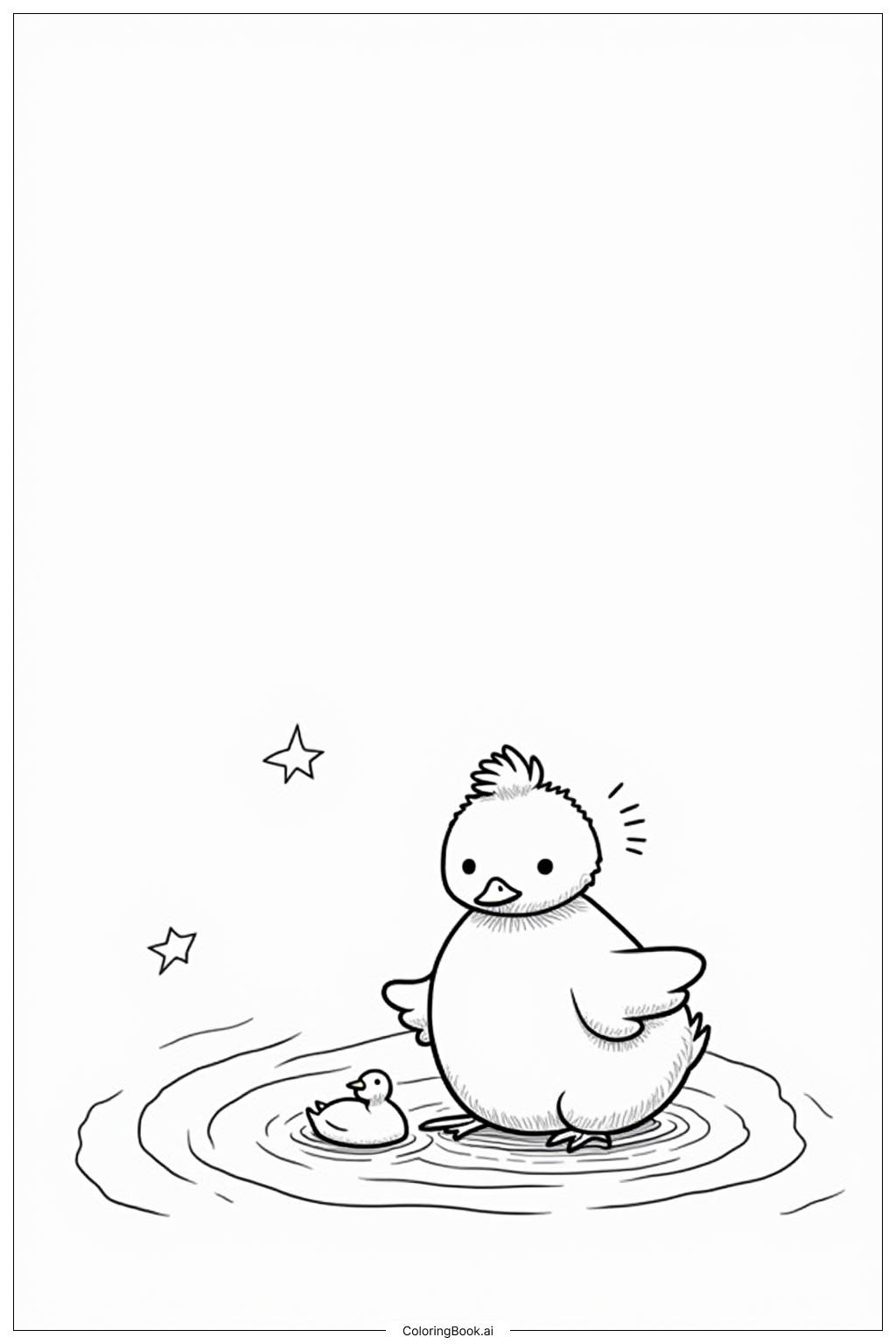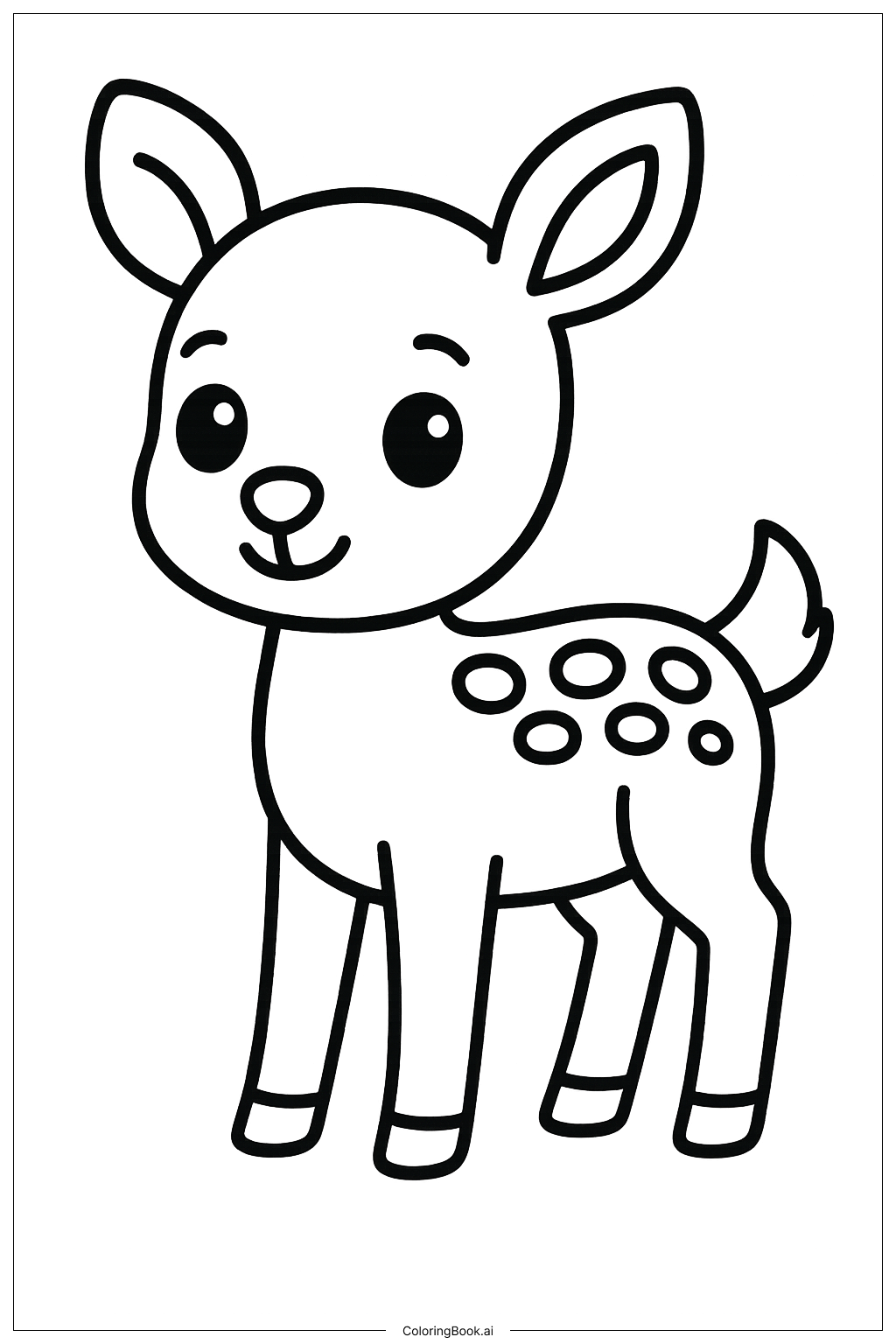Coloring tips: How to color A Pod of Beluga Whales and other Arctic Animals coloring page well?
For coloring this picture, you can use different shades of blue and white for the water and icebergs. Beluga whales are usually white or light gray, so you can use soft pale colors for them. Seals often have a light brown, gray, or spotted coat, so try mixing those colors. Puffins have black and white feathers with a bright orange beak and feet, which can add a nice splash of color. Use light and soft colors for the background to make the animals stand out. You can also add some blue shades to the water waves to give a sense of cold Arctic sea.
Coloring challenges: Which parts are difficult to color and need attention for A Pod of Beluga Whales and other Arctic Animals coloring page?
1. The beluga whales have smooth large shapes that may be tricky to color evenly without missing spots. Staying inside the lines is important here.
2. The puffins have smaller details like beaks and feet that need careful coloring to keep neatness.
3. The seals have small spots and lines on their bodies that require attention to detail.
4. The icebergs and water waves may need gentle blending of blue and white to look natural.
5. Coloring the background while making sure animals stand out can be challenging for balance.
Benefits of coloring books: Advantages of drawing A Pod of Beluga Whales and other Arctic Animals coloring page
Coloring this picture helps children learn about Arctic animals and their environment. It improves their hand-eye coordination and fine motor skills as they try to stay inside the lines. Choosing colors encourages creativity and teaches about nature's colors. It also helps develop focus and patience by working on small details like puffins and seals. Overall, coloring this scene makes learning about wildlife fun and interactive.
